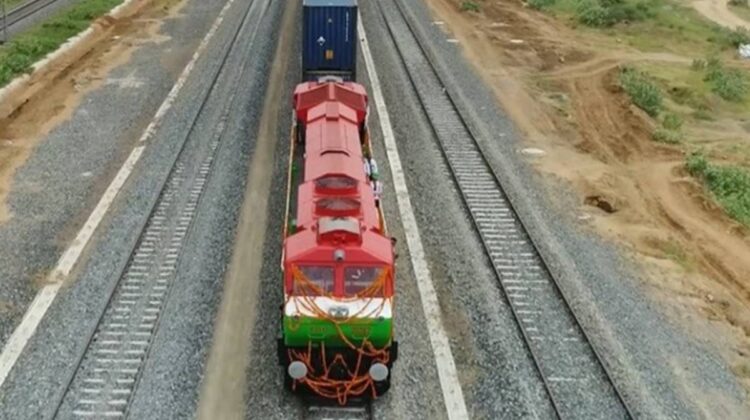
More speed for freight trains! Trains on DFC run faster than Rajdhani at 99.3 kmph
NEW DELHI : The goods trains that are running on the dedicated freight corridor (DFC) are now operating at a higher speed than Rajdhani.
The goods trains that are running on the dedicated freight corridor (DFC) are now operating at a higher speed than Rajdhani. On Saturday, a freight train clocked the highest speed of 99.3 kmph, news agency PTI reported. It is to note that Rajdhani (a passenger train) comes under one of the top three trains operating under high speed. Usually, freight trains run at a lesser speed when compared to Rajdhani or Shatabdi, however, now the goods carrying trains are achieving high speeds. Rajdhani runs at an average speed of 80 kmph on the rail network.
The high speed of this freight train was recorded on the 331-km New Khurja-New Bhaupur section of the Eastern Dedicated Freight Corridor (EDFC). This corridor started operations last year on December 29. Another corridor section of 306 km between Rewari and Madar was also opened on January 7 on the Western Dedicated Freight Corridor (WDFC). These corridors allow freight trains to operate seamlessly. As of now, as many as 4,000 trains have run on these corridors with around 3,000 trains operating on the EDFC.
Citing an official, the report noted that some trains running on these sections/ corridors have achieved an average speed of 99.40 kmph in EDFC whereas the average speed was noted at 89.50 kmph in WDFC. The official claimed that these speeds can easily be compared to any of the fastest mail express trains. Around 3077 trains running on the EDFC have been fast with the maximum speed achieved at 97.85 kmph till Saturday.
It was an empty train that was going on its way to load coal when it recorded a speed of 99.30 kmph and the journey of over 300 km was completed in just three hours and twenty minutes.
It is to note that on these dedicated corridors, the restrictions are much less and this has allowed trains to achieve such high speeds. On other corridors of Indian Railways, many restrictions are prevalent leading to congestion and a time loss of up to 10 minutes per 100 km, the report said. But in the last one year as the Covid-19 pandemic has affected the traffic of passenger trains, freight trains have gained momentum. Even on regular tracks, their average speed has seen a jump of around 60 per cent.
In the pre-Covid era, freight trains on the rail network used to run at an average speed of 24 kmph. With lockdown and lesser passenger trains, goods trains in some zones have managed to double their speeds.
Source : Financial Express

